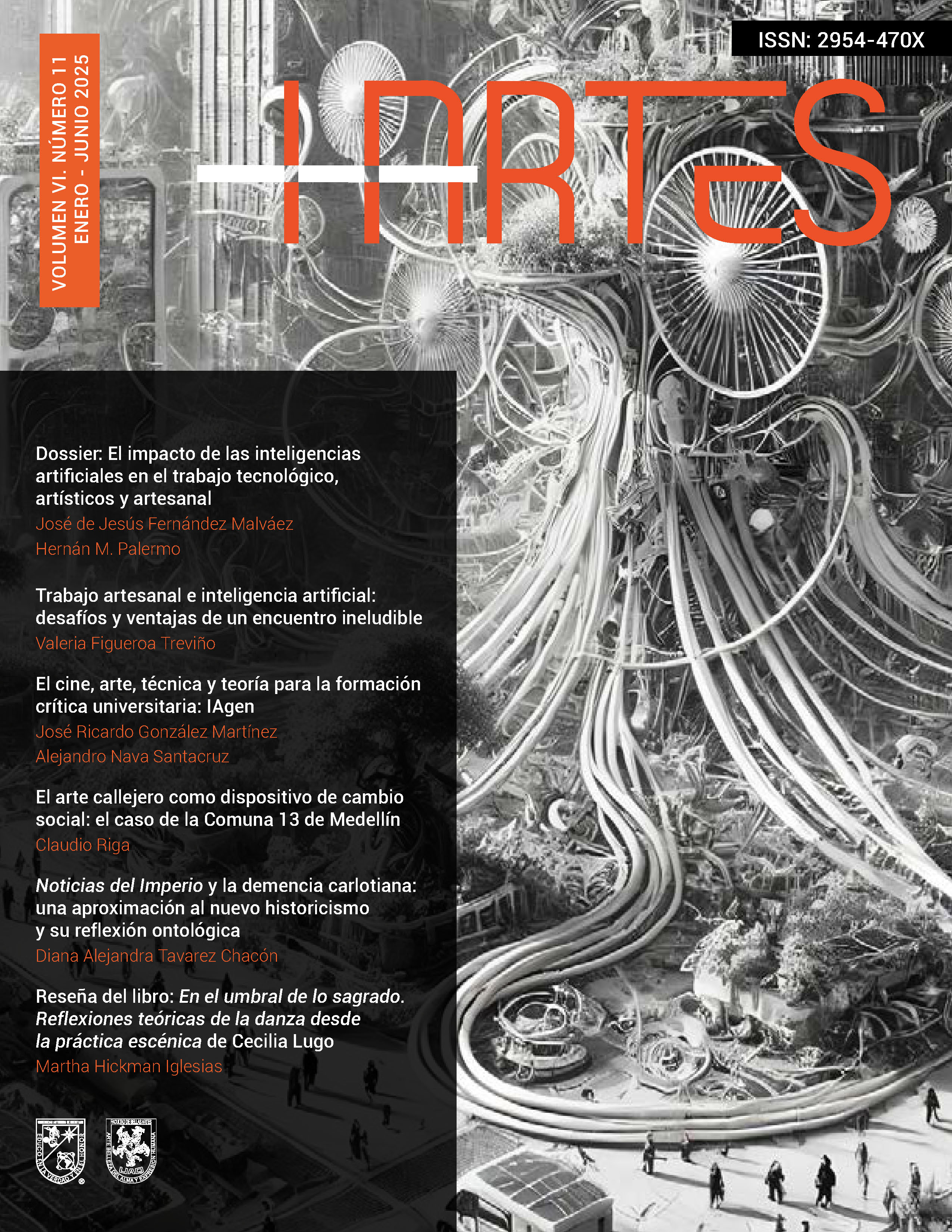Abstract
The cinematographic vanguard has historically been important in fostering cinematographic creation and innovation. In the digital age, its study acquires a new dimension of relevance, since the analysis of these vanguard movements provides students with tools to understand how cinema has evolved as a means of artistic expression and social manifestation. This knowledge is essential to developing robust critical thinking, capable of evaluating not only the content of a film, but also its form, its historical context, and its cultural relevance from and in its immediate environment. With the arrival of large-scale language models (LLM) and generative artificial intelligence (IAGen), students face an increasingly complex social landscape where technologies are transforming the production, distribution and analysis of movies. LLMs can generate scripts or critical analyses, while IAGens can create visual effects or even entire film sequences, modifying the cinematic concept. This essay analyzes the importance of cinematic avant-garde in the development of students’ critical thinking, especially in the current context of the proliferation of large-scale language models in the form of generative artificial intelligences.
References
Boden, M. A. (2017). Inteligencia artificial. Turner.
Cabrera, J. (2015). Cine: 100 años de filosofía: una introducción a la filosofía a través del análisis de películas (Vol. 302623). Editorial Gedisa.
Epstein, J. (1957). La Esencia del Cine. Galatea Nueva Visión Ediciones.
Espeleta, J. (2024). Influencia de la IA en el cine: ¿una revolución del séptimo arte? Bogotá. https://www.ucentral.edu.co/noticentral/influencia-ia-cine-revolucion-del-septimo-arte
Fernández, D. “Parker,” & Medina, N. (2024). No me mata la muerte. 2024. https://www.youtube.com/watch?v=RHldBVp-GOM
Manovich, L. (2005). El lenguaje de los nuevos medios. Capítulo: ¿Qué Son Los Nuevos Medios?
Metz, C. (2001). Psicoanálisis y cine. El significante imaginario.
Noriega, J. L. S. (2002). Historia del cine. Alianza.
Wilkie, R. (2011). The digital condition: Class and culture in the information network. Fordham University Press.
Zavala, L. (2001). Elementos del discurso cinematográfico (Universidad Autónoma Metropolitana, Ed.; Primera edición). Universidad Autónoma Metropolitana Unidad Xochimilco. https://drive.google.com/file/d/1OW3pi10f8yggVGStAd2IchIMRgOTxt_e/view

This work is licensed under a Creative Commons Attribution-NonCommercial-ShareAlike 4.0 International License.
Copyright (c) 2025 HArtes


